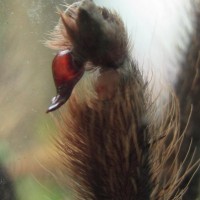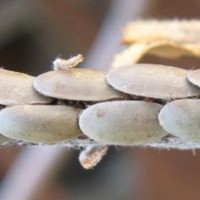Search results
-
D
male morphology and behavior
I think my Lasiodora parahybana is now an adult male. I raised it from a tiny sling. Now I have some questions. I attached a photo of a backwards claw on the pedipalp, which I think ID's it as male. Is that right? Besides that, his behavior is different, climbing all over the terrarium...- dfourer
- Thread
- Replies: 1
- Forum: Tarantula Questions & Discussions
-

Pedipalp Photo For Sexing
Lasiodora parahybana Pdeipalp photo for sexing.- dfourer
- Media item
- Comments: 1
- Category: Epiandrous fusillae sexing (Not Molts)
-
D
Tarantula behavior/habitat
I built the habitats I described in this post and moved the tarantulas in a month ago. I put loose peat moss and garden dirt in the bottom, 3-4 inches deep. Then I put dry leaves, sticks, and grass on top, two inches deep. I made a burrow by placing a piece of tree bark over a hole I scooped...- dfourer
- Post #9
- Forum: Tarantula Questions & Discussions
-
D
Tarantula behavior/habitat
Killy, Thanks for the encouragement. My plan is shaping up. To fill up a fish tank with lots of light weight debris and plant material for the tarantula to get lost in. Grass, leaves, bark, peat, sticks, etc. I will not have real dirt, but keep the height of materials near the lid, so there...- dfourer
- Post #8
- Forum: Tarantula Questions & Discussions
-
D
Tarantula behavior/habitat
Thanks for your quick replies so far. I've gone to your profiles and read a lot of your own posts. Reading posted behaviorial observations from others this evening has been helpful. As I wrote, "I don't expect to come close to learning what goes on in a natural habitat."- dfourer
- Post #5
- Forum: Tarantula Questions & Discussions
-
D
A Spider with Mites
I call these velvet mites. I see them out in the open, aparently scavanging or hunting in plain sight. Nice photos. I never really looked into their biology.- dfourer
- Post #27
- Forum: Tarantula Questions & Discussions
-
D
Habitrail
In my brief experience, the young T's make two ends to a burrow, a front and a back. They closed both openings when going through molt.- dfourer
- Post #14
- Forum: Tarantula Questions & Discussions
-
D
Cricket Larvae?
I got beetles and larvae into my Blaptica dubia roach colony and they are a pain. Five-millimeter black beetles and brown striped larvae. They don't really hurt the roaches, but the colony is messy and I can't separate them. I know they came from another roach breeder.- dfourer
- Post #18
- Forum: Insects, Other Invertebrates & Arthropods
-
D
Tarantula behavior/habitat
Musings on T behavior and habitat. I started with a few slings and now have a Brachypelma vagans and Lasiodora parahabana each two inches in body length. While smaller, they dug extensive burrows and generally stayed below ground. They closed the burrow opening a week before molting and...- dfourer
- Thread
- Replies: 8
- Forum: Tarantula Questions & Discussions
-
D
Identify these eggs
Found these eggs on an apple twig, overwintering in Chicago, IL. Can you identify them? Each egg is 3/16 inch in length.- dfourer
- Thread
- Replies: 3
- Forum: Insects, Other Invertebrates & Arthropods
-

insect eggs
I want to identify these eggs over-wintering on an apple twig in Chicago, IL- dfourer
- Media item
- Comments: 0
- Category: Insects
-
D
new to B. dubia and B. lateralis
Skips, Don't glue the reptile heat pad onto the plastic. They don't melt plastic. After a few hours, feel the bottom of the plastic with your hand--it should be pretty warm above the heat pad, but not burning hot. Just corn meal sounds a little spare. They might be missing some part of...- dfourer
- Post #22
- Forum: Insects, Other Invertebrates & Arthropods
-
D
new to B. dubia and B. lateralis
I've had really good luck with dubias, often selling off my extras. Here's how I do it. A tub with a reptile heat pad underneath (8 watt). Screen in the top for air. I use egg cartons and no substrate. They make their own substrate. Keep it dry. Humidity is very low in my house in...- dfourer
- Post #19
- Forum: Insects, Other Invertebrates & Arthropods
-

Blaptica dubia roaches
Blaptica dubia or Orange Spotted Roaches- dfourer
- Media item
- Comments: 0
- Category: Insects
